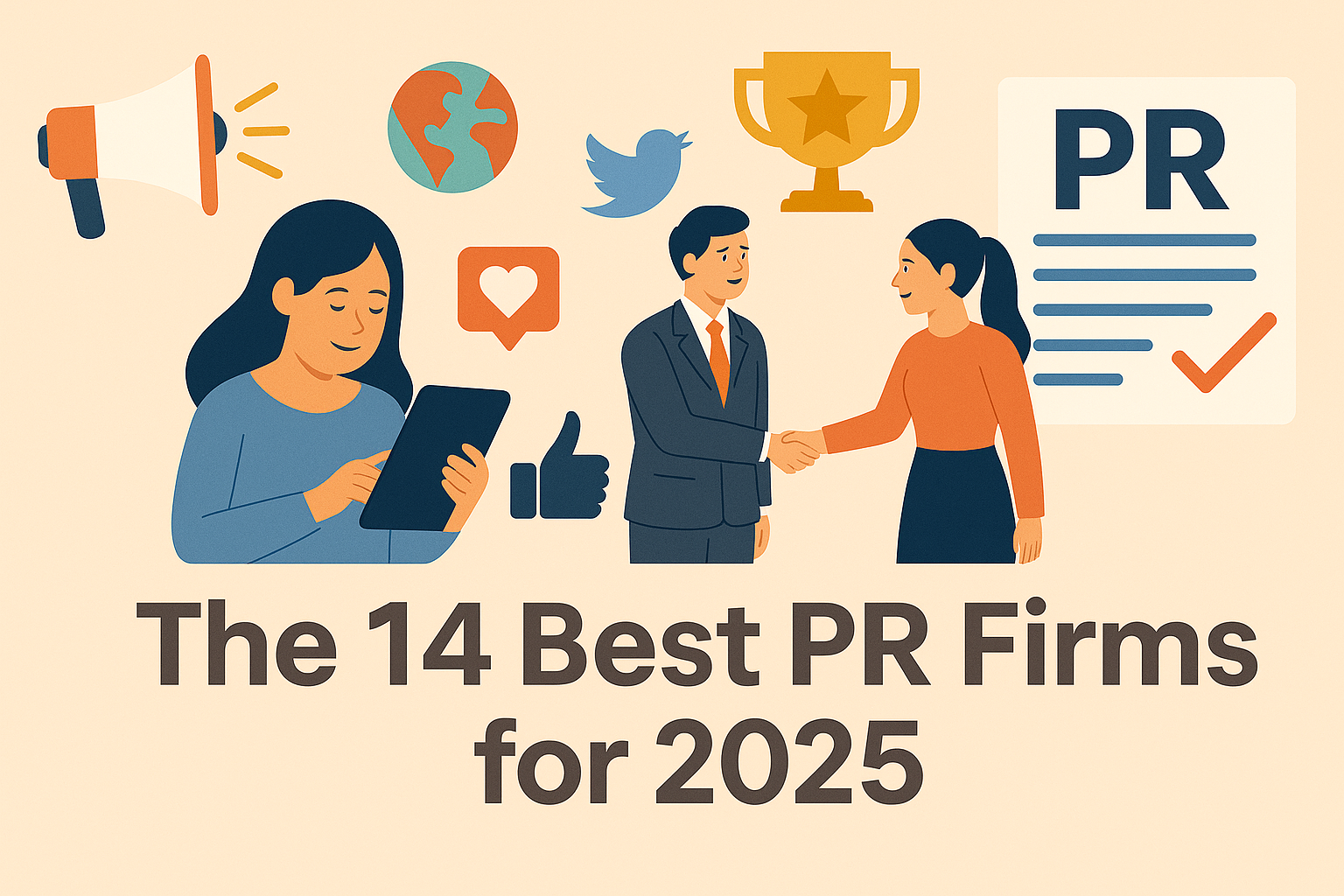Successful PR campaigns come in as many different forms as there are brands. What could be innovative and on-point for one company may be totally off-key for another.
Despite that, looking at other companies’ PR successes can still be helpful when developing a comprehensive PR campaign for your brand. So let’s look at 19 major PR successes over the years from companies across various industries and key takeaways to strengthen the impact of your next PR campaign.
1. The “Summer of Barbie” Campaign
The “Summer of Barbie” campaign, associated with the 2023 Barbie movie, created a global buzz. This vibrant campaign included painting mansions pink and setting up life-sized Barbie boxes for photo ops, leading to a surprising pink paint shortage. The campaign’s success was monumental, contributing to the movie’s staggering $2.9 billion global gross.
The Barbie campaign tapped into the nostalgia of a beloved brand while aligning it with contemporary trends. Brands can learn to blend nostalgia with modern elements to appeal to both long-time followers and new audiences.
By weaving a compelling narrative around Barbie and integrating it with real-world experiences, the campaign created a story that people wanted to be a part of. Brands should focus on crafting stories that are not only engaging but also offer opportunities for the audience to participate and contribute, creating a shared and more impactful brand journey.
2. Reinventing Financial PR with Dwolla
Dwolla, an established player in the modern payments platform sector, sought to rejuvenate its image and boost brand awareness in 2022. Zen Media’s approach was a dynamic 90-day PR blitz, focusing on forward-thinking announcements and unveiling new partnerships. This comprehensive strategy also highlighted unique case studies and proactive podcast pitches, cementing Dwolla’s position as a fintech thought leader. The outcome was impressive: over 170 media pieces and 250+ social media engagements, significantly raising Dwolla’s profile and exceeding their expectations in brand visibility.
Dwolla’s campaign also underscores the importance of innovation within industry norms. In the financial sector, where trust and reliability are paramount, Dwolla managed to inject freshness and dynamism into its brand image without losing sight of these core values. Brands in other sectors can take note of this balance between innovation and adherence to industry standards.
3. Lego Rebuild the World
Their first global PR campaign in decades, Lego’s Rebuild the World was focused on inspiring creative thinking in kids—but also adults. As part of the public relations campaign, Lego asked customers to submit pictures of their creations, aggregated onto a 3D globe on the brand’s website. Users can move and spin the globe to see what people worldwide have created.
The best part is that Rebuild the World struck the perfect balance between inspirational and playful—an exact fit for Lego’s overall brand personality.
4. Kamua’s Product Launch campaign
Our client Kamua, an AI-powered video editing platform, wanted to establish itself as an authoritative voice in the video editing industry and rapidly expand its base of dedicated users.
We worked with them to create a comprehensive, strategic public relations strategy that included bylined articles by Kamua founder and CEO Paul Robert Cary; multiple monthly mentions including in tier-one publications; and, most importantly, a Product Hunt launch campaign that would get Kamua’s name and product in front of thousands of tech-savvy users and influencers.
Kamua became one of the top three most-hunted products on Product Hunt, was featured in Product Hunt’s email newsletter, and was named Best Product of the Week by Product Hunt the week of its campaign. Just one outcome of this PR campaign? The platform gained 400 new users literally overnight.
Related read: Product Launch Marketing: Strategy, Plan, and Execute
5. Dove’s #TheSelfieTalk Campaign
A decade after the women’s skincare brand launched its Real Beauty campaign, it’s still going strong.
Why? Because they’ve involved real women (and girls) every step of the way. Their latest campaign is a commentary on how social media affects girls’ self-esteem. Their #TheSelfieTalkCampaign shows a young girl editing a photo of herself to post online. To make their point, Dove shows this process in reverse. The advertisement ends by showing the girl’s natural face without makeup or filters.
From honest conversations on beauty standards to what it means to “throw like a girl,” Dove’s public relations campaigns have evolved and adapted to the times by staying sincerely in touch with what its customers are experiencing in their daily lives.
6. BBC’s Peaky Blinders fan art campaign
Fan art is a world unto itself—but surprisingly few brands embrace this “unofficial” view, even though it’s probably the best possible source of user-generated content a brand could ever ask for.
An exception to this was the show Peaky Blinders, which issued a call to fans to create art for their new season’s imagery in 2019. Not only did this generate interest among casual viewers and those who were not yet fans, but it also strengthened the relationship between the show’s creators and the viewers who love it—a win-win.
Related read: How to Take Your User-Generated Content from Good to Great
7. Caldwell’s newsjacking campaign
Caldwell, a law firm specializing in high-growth startups and early-stage tech and life sciences, aimed to extend its brand beyond its founder’s reputation. The firm worked with Zen Media, and our innovative strategy involved a newsjacking campaign, seizing real-time opportunities for Caldwell’s attorneys to comment on global cases. This proactive approach led to numerous features in trade magazines covering tech and biotech cases, enhancing Caldwell’s visibility and establishing its lawyers as industry thought leaders.
Caldwell’s approach illustrates the effectiveness of creating a multi-dimensional brand identity. By showcasing their expertise on various platforms and media, they not only enhanced their brand visibility but also added depth to their brand’s persona. Brands should strive to create a diverse yet cohesive image that reflects their multiple strengths and areas of expertise.
8. The Eras Tour — More than just a concert
Can we call a concert tour a campaign? Why not! Taylor Swift took over the world in 2023 with her Eras Tour. She not only blasted through global attendance and revenue records for a tour and had a direct impact on local economies where she performed (and released multiple albums and a film), but she also created a widespread culture that consumed the market.
The Eras Tour exemplifies the power of a holistic marketing approach. By integrating various elements—music, visual arts, storytelling—into a cohesive campaign, Swift managed to create a brand experience that was both immersive and memorable. Brands can learn to integrate different marketing elements to create a more comprehensive and engaging campaign.
Another critical aspect of the Eras Tour’s success was Swift’s strong fan base. Brands should focus on building and nurturing a loyal community around their products or services—it can be a powerful tool in amplifying the impact of campaigns.
9. State Street Global Advisors Fearless Girl
The Fearless Girl statue that the Wall Street firm State Street Global Advisors firm placed to face down the famous Wall Street bull became a symbol of the financial sector’s lack of gender diversity, and the women who have been at the forefront of trying to change that.
But in addition to its symbolic importance, it’s also a carefully crafted advertisement—one for the firm’s exchange-traded Gender Diversity Index SHE fund.
The firm has faced some criticism over the years since putting up the statue, as it hasn’t always been clear whether State Street Global Advisors is making gender diversity a true priority.
And this brings up another important point when it comes to creating successful PR campaigns: Your brand needs to put its money where its mouth is. If you say diversity, or sustainability, or another issue is important to you, make sure you’re backing that up with real action.
Related read: Negative Public Perceptions and Other PR Problems: How To Change The Narrative
10. Calian IT & Cyber Solutions—Blending brands for a bigger impact
Following its acquisition of Computex, Calian IT & Cyber Solutions faced the challenge of merging brand identities and penetrating the U.S. market. They partnered with us at Zen Media, and we created a strategic PR roadmap, including curated proactive pitching topics to position two of Calian IT & Cyber Solutions’ senior executives as thought leaders in their areas of expertise.
Zen would also help secure the executives Forbes Technology Council memberships and launch a regular cadence of published bylines. This robust campaign led to significant media coverage and awards, with Calian’s IT & Cyber Solutions division reporting double-digit revenue growth, largely credited to their expanded U.S. presence.
In merging two brands, it’s crucial to balance innovation with the preservation of core values and strengths that define each brand. This balance helps in maintaining loyalty among existing customers while attracting new ones.
11. New Cosmos USA’s community-first approach
New Cosmos USA, committed to preventing natural gas explosions with their DeNova Detect alarm, took a unique community-centric PR approach. In response to a gas explosion in West Reading, Pennsylvania, they collaborated with Zen Media for a rapid community support and media outreach strategy. This involved donations, local PSA publications, and educational materials on gas safety.
The campaign, replicated in other locations, not only bolstered community safety but also positioned DeNova Detect as a leader in natural gas safety, leading to increased sales in those areas. By positioning the DeNova Detect alarm as a solution to a community issue, New Cosmos USA effectively aligned their product with community welfare, enhancing the product’s value proposition. Brands should evaluate the success of their campaigns not just in terms of sales but also by their impact on community welfare and social awareness.
12. Gender Pay Gap Bot Fights For Fair Wages
As we’ve stated, many companies like to raise awareness of social issues and fight for change. The Gender Pay Gap Bot is an automated Twitter account that advocates for women’s rights to equal pay—and on International Women’s Day, the bot ran a PR campaign to hold companies accountable.
Their slogan: “Stop posting platitudes. Start fixing the problem.”
As companies in various industries filled users’ feeds with empowering messages, the Gender Pay Gap Bot responded with data revealing the inequities in compensation between their male and female employees. This PR strategy sheds light on these issues through transparency and neutral messaging. Today, the Twitter account has over 240,000 followers.
13. McDonald’s ‘We Hire People’ Campaign
Companies that emphasize the importance of diversity, equity, and inclusion (DEI) initiatives are paving the way for a kinder, more inclusive world. Promoting these brand values through public relations strategies is a great way to show your commitment to welcoming all of your employees and customers.
McDonald’s ‘We Hire People” Campaign does just this. The fast-food chain introduces viewers to many individuals with various cultural backgrounds, passions, and ages. The advertisement shows that McDonald’s doors are open to everyone. These messages are essential in 2024.
14. Nike’s ‘Just Do It’ Campaign
This campaign has been one of the most successful PR campaigns of all time. The tagline “Just Do It” is simple yet powerful and has become synonymous with Nike’s brand identity. The campaign’s success is due to its inspirational message that encourages consumers to push themselves beyond their limits and achieve their goals. Nike has used the campaign to showcase its products as tools that help people achieve their athletic potential. The “Just Do It” campaign has also featured famous athletes, such as Michael Jordan and Serena Williams, who embody Nike’s brand values of determination, perseverance, and excellence.
15. Google’s Year in Search
Google’s “Year in Search” campaign is an annual PR campaign that showcases the top trending searches of the year. The campaign has been successful because it taps into people’s emotional connections to current events and showcases Google’s ability to capture the pulse of the world through search data. The campaign is also highly shareable and creates a sense of community around the shared experience of looking back at the year’s top moments. The campaign reinforces Google’s brand identity as a company that is at the forefront of technology and innovation.
16. Red Bull’s ‘Stratos’ Campaign
In 2012, Red Bull sponsored Felix Baumgartner’s record-breaking jump from the edge of space called the “Red Bull Stratos.” The campaign was a massive success, generating over 52 million views on YouTube and millions of dollars in earned media coverage. The campaign was successful because it showcased Red Bull’s brand values of extreme sports and adventure while also breaking a world record. The campaign was a testament to the power of experiential marketing and how brands can leverage events to create memorable and impactful campaigns.
17. Chipotle’s ‘Food with ‘Integrity’ campaign
Chipotle’s “Food with Integrity” campaign was an innovative marketing campaign that aimed to differentiate the company from other fast-food chains by highlighting its commitment to sourcing sustainable and ethically produced ingredients for its menu. The campaign featured a series of advertisements that showcased Chipotle’s use of fresh, locally sourced, and sustainably-raised ingredients and its efforts to reduce its carbon footprint.
What made the campaign innovative was that it was not just a marketing gimmick; Chipotle really did change its sourcing practices to live up to the promises it made in the ads. The company worked directly with farmers and producers to develop sustainable farming practices, and it paid premium prices to ensure that the farmers were able to make a living wage. The success of the campaign was due to its resonance with consumers who valued healthier, more sustainable food options and appreciated Chipotle’s mission as much as its food.
18. Patagonia Says ‘Don’t Buy This Jacket’
Patagonia’s “Don’t Buy This Jacket” campaign was an innovative marketing campaign that aimed to encourage customers to buy less and reduce their environmental impact. The campaign was launched in 2011 and featured a full-page ad in The New York Times that showed one of Patagonia’s best-selling jackets with the headline “Don’t Buy This Jacket.” The ad went on to explain the environmental impact of the jacket’s production and encouraged customers to think twice before making a purchase.
What made the campaign innovative was that it went against the traditional marketing strategy of encouraging customers to buy more. Instead, Patagonia wanted to use its platform to raise awareness about the environmental impact of consumerism and to encourage customers to make more conscious choices. The campaign also reflected Patagonia’s long-standing commitment to sustainability and its belief that the company had a responsibility to minimize its environmental impact. The campaign was a success and helped to solidify Patagonia’s reputation as a leader in sustainability and environmental activism.
19. Airbnb’s ‘Belong Anywhere’ Campaign
This PR campaign was an innovative campaign that aimed to position the company as a global community that offered unique and authentic travel experiences. The campaign focused on Airbnb’s ability to connect people from different cultures and backgrounds, highlighting the role of welcoming and knowledgeable local hosts. The campaign was successful because it tapped into the growing trend of experiential travel and emphasized the community aspect of travel. It helped establish Airbnb as a disruptor in the travel industry and drove significant growth for the company.
Creating an innovative, successful PR campaign requires a team of experts who know your brand inside and out. If you’re looking for help making your next PR campaign stand out, get in touch with Zen!





